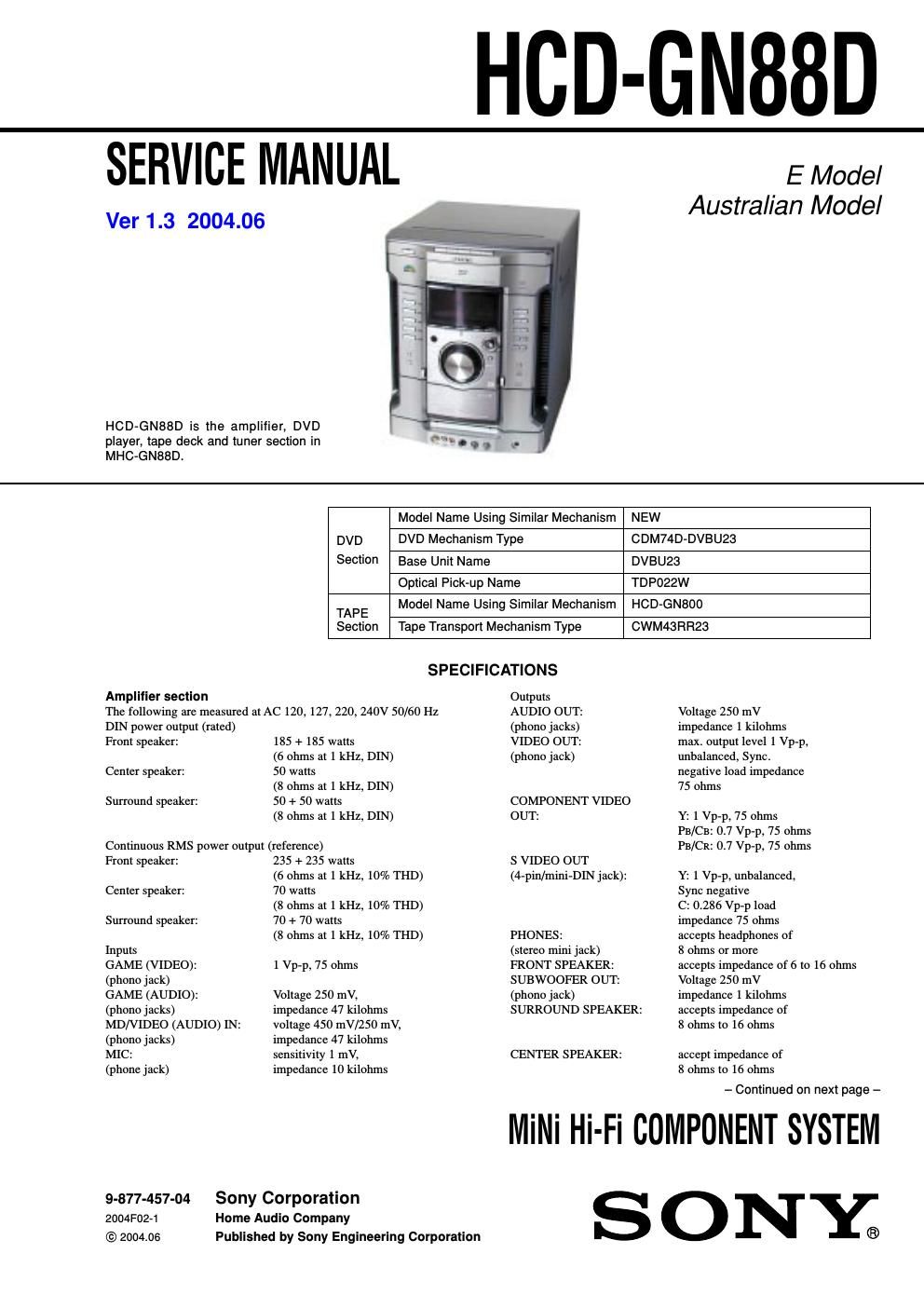Sony hcd gn 88d ver 1 3
This is the 114 pages manual for sony hcd gn 88d ver 1 3.
Read or download the pdf for free. If you want to contribute, please upload pdfs to audioservicemanuals.wetransfer.com.
Page: 1 / 114
